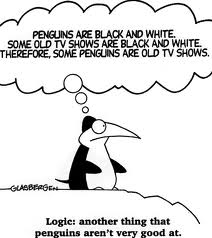During World War II, the US military faced a critical decision regarding aircraft armor. They assumed that analyzing bullet hole distribution on returning planes would reveal where to place armor for improved survival rates. However, this assumption proved incorrect, as it ignored a crucial factor: missing bullet holes on the engines of examined planes were from aircraft that didn’t return, signifying their destruction. Abraham Wald, a statistician, challenged this assumption by forming a hypothesis that the absence of bullet holes on engines was significant. His hypothesis indicated that armor should be placed where bullet holes were absent – specifically, on the engines. This shift from assumption to hypothesis-based thinking led to a decision that significantly improved aircraft survival rates.

Exploring the Concept: Assumptions and Hypotheses
Understanding the Concept:
- Assumptions: Assumptions are unfounded beliefs held without concrete evidence, often rooted in personal biases or limited information.
- Hypotheses: Hypotheses are educated guesses or tentative explanations that can be tested through observation and experimentation. They provide a structured framework for investigation.
Why It’s Relevant:
- Minimizes Risk: Distinguishing between assumptions and hypotheses reduces the risk of making decisions based on flawed beliefs.
- Promotes Critical Thinking: Encourages questioning of assumptions, fostering critical thinking and evidence-seeking.
- Drives Innovation: In business and product development, hypotheses fuel innovation by guiding experimentation and adaptation based on real-world feedback.
Applying the Concept:
In various aspects of life, from business to personal growth, applying the “Assumptions Blind, Hypotheses Guide” concept can lead to more informed and effective decision-making. This section explores how this concept can be applied:
In Business and Decision-Making:
In the realm of business and decision-making, it’s essential to challenge assumptions and formulate hypotheses to guide strategic choices. Here’s how you can apply the concept:
- Challenging Assumptions: Begin by questioning assumptions about customer preferences, market trends, or competition. For instance, don’t assume that your target market prefers a specific product feature; instead, ask if it’s backed by evidence.
- Formulating Hypotheses: Next, develop hypotheses about various aspects of your business strategy. These hypotheses could relate to market opportunities, product features, or marketing strategies. For instance, hypothesize that a particular marketing channel will yield better results than another.
- Testing Hypotheses: To put your hypotheses to the test, consider using surveys, market research, A/B testing, or pilot programs. Collect data and feedback to determine whether your hypotheses hold true.
- Using Data-Driven Insights: Make decisions based on data-driven insights. If your hypothesis about a specific marketing channel performing better is supported by concrete evidence, allocate resources accordingly. Conversely, if the data suggests otherwise, be open to adapting your strategy.
Example: Imagine you run an e-commerce business and assume that customers prefer a certain layout for your website. However, you formulate a hypothesis that a more user-friendly design could lead to higher conversion rates. You conduct A/B testing, and the data reveals that the redesigned layout indeed increases sales. By relying on the hypothesis instead of the initial assumption, you make an informed decision that positively impacts your business.
In Product Development
In the realm of product development, applying the concept involves shifting from assumption-based design to hypothesis-driven innovation:
- Avoiding Assumptions About User Preferences: Instead of assuming what users want, create hypotheses about their needs and preferences. For example, don’t assume that users want more features in your software; hypothesize that simplicity and ease of use are critical for user engagement.
- Developing Prototypes and MVPs: To test your hypotheses, develop prototypes or minimum viable products (MVPs). These prototypes allow you to put your ideas into the hands of real users and gather feedback.
- Gathering User Feedback: Interact with users and gather feedback about your product. This feedback becomes invaluable in refining your product based on real-world user experiences.
- Continuous Improvement: Continuously refine and improve your product based on the insights gained from user feedback. By doing so, you align your product with user expectations and needs.
Example: Consider a scenario where you’re developing a new smartphone app. Instead of assuming user preferences for the user interface, you formulate a hypothesis that a simpler and more intuitive design would lead to better user engagement. You create a prototype with this design and gather user feedback. The feedback confirms your hypothesis, allowing you to make an informed decision to finalize the app’s design.
In Personal Growth and Decision-Making:
In personal life and decision-making, the concept can guide choices related to career, education, and personal development:
- Avoiding Assumptions About Happiness and Success: When making significant life choices, such as changing careers or pursuing higher education, don’t rely solely on assumptions about what will make you happy or successful.
- Formulating Hypotheses About Goals: Formulate hypotheses about your goals, interests, and potential paths. For instance, if you’re considering a career change, hypothesize that a certain field aligns better with your passions and strengths.
- Testing Hypotheses Through Research and Experiences: Test these hypotheses through research, trial experiences, or consultations with experts. Seek out opportunities that allow you to gain firsthand insights.
- Using Insights for Informed Decisions: Use the insights gained from testing your hypotheses to make informed decisions that align with your values and aspirations. This approach ensures that your life choices are based on evidence rather than unfounded assumptions.
Example: Suppose you’re contemplating a career change, assuming that a higher-paying job will lead to greater satisfaction. However, you formulate a hypothesis that pursuing a career aligned with your true passion will result in long-term happiness. You explore opportunities in that field, conduct informational interviews, and gain hands-on experience. The insights gained from this process guide your decision to pursue a career that aligns with your passion and values, rather than relying on the initial assumption about income.
Benefits of Embracing the Concept:
By embracing the “Assumptions Blind, Hypotheses Guide” concept in your personal and professional life, you can:
- Make more informed decisions that are based on evidence and critical thinking.
- Adapt and innovate in professional and personal contexts.
- Minimize the risk of costly mistakes and misunderstandings.
- Cultivate a mindset of curiosity, continuous learning, and adaptability.
The story of the US military’s aircraft armor decision vividly illustrates the pivotal importance of distinguishing between assumptions and hypotheses in various facets of life, exemplifying the concept of “Assumptions Blind, Hypotheses Guide.” This narrative underscores the profound impact that critically evaluating assumptions and formulating testable hypotheses can have on decision-making. Whether applied in scientific research, innovation, personal relationships, or risk management, this concept encourages us to engage in rigorous thinking, continuously challenge our beliefs, and base our choices on empirical evidence rather than unfounded presumptions. By adopting this mindset, individuals and organizations can navigate the intricacies of life, work, and innovation with greater clarity and rationality, resulting in better outcomes and a heightened comprehension of the world that surrounds us. “Assumptions Blind, Hypotheses Guide” serves as an empowering principle that enables us to approach decision-making and problem-solving with a refined perspective, leading to more effective solutions and a deeper insight into our complex reality.
#DecisionMaking #Leadership #Innovation #BusinessInsights




